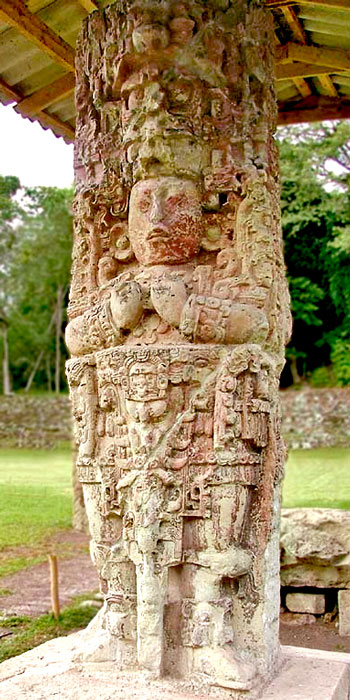The Copàn Ruins

The Copàn ruins are located in the western part of Honduras, near the border with Guatemala. This archaeological site is one of the most emblematic and a source of numerous information on the presence of the Mayan civilization in the area.
Located in the southern part of what we know as the “Mayan Route”, the ruins of Copàn reached their peak between the fifth and ninth centuries AD and were declared a World Heritage Site by UNESCO in 1980.

One of the most significant elements of the Copàn Archaeological Site is the Hieroglyphic Staircase, with more than two thousand signs and glyphs identifying Mayan culture.
Although it has not yet been deciphered in its entirety, many scholars claim that the text narrates the dynastic history of the city. For several years the staircase has been kept covered by a sheet that protects it from atmospheric agents.
Hieroglyphs are also present on the back of the stelae.


To preserve the carvings on their sculptures, the Mayans used stucco. Thanks to this material we can in fact still enjoy the writings present for example on the hieroglyphic staircase.
The stucco is a very fine mixture composed of lime, pulverized marble, gypsum, and natural pigments. To heat the stucco needed to build a square meter of the city, the Maya had to burn more than twenty trees. To cover a single pyramid with stucco, they had to cut all the trees on an area of 6.5 square kilometers. The Maya covered practically everything with stucco and this caused deforestation and impoverishment of the land that forced them to abandon their cities.
In fact, there were many cultures that disappeared for this reason. Deforestation to build boats, cities, or to procure fuel was the order of the day and inevitably led to anthropogenic climate changes.
The stelae are stone monoliths painted red, covered with stucco, and which had three functions: historical, chronological, and astronomical. In the astronomical field, the Maya used the steles as gauges that established the seasons, climatic changes, and the movement of the earth in a rather exact manner.

They were used as sundials because thanks to the shadow produced, it was possible to predict the solstices, the equinoxes, the time of sowing or harvesting, or the rainy season.
Some steles pointing east depict the face of a young person and symbolize the beginning of a new day. Instead, those facing west, depicted with the same face but with a beard, represented the end of the day.
They also might’ve had another metaphorical for the beginning and end of new eras, since the mythological belief of the Mayans included a cyclic view of history.

